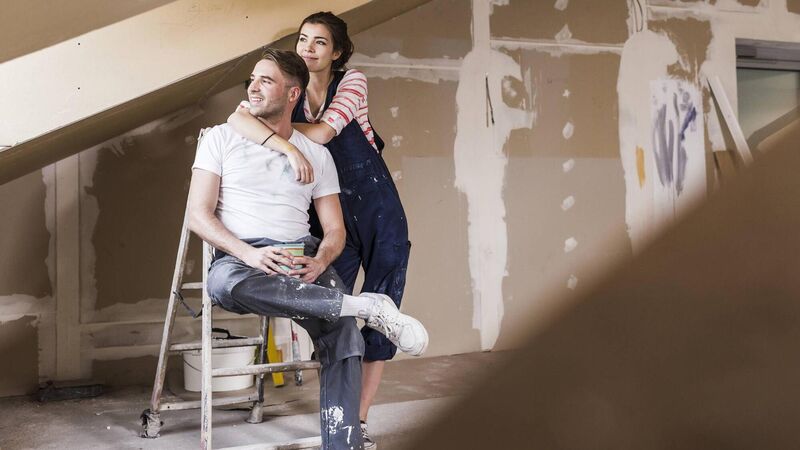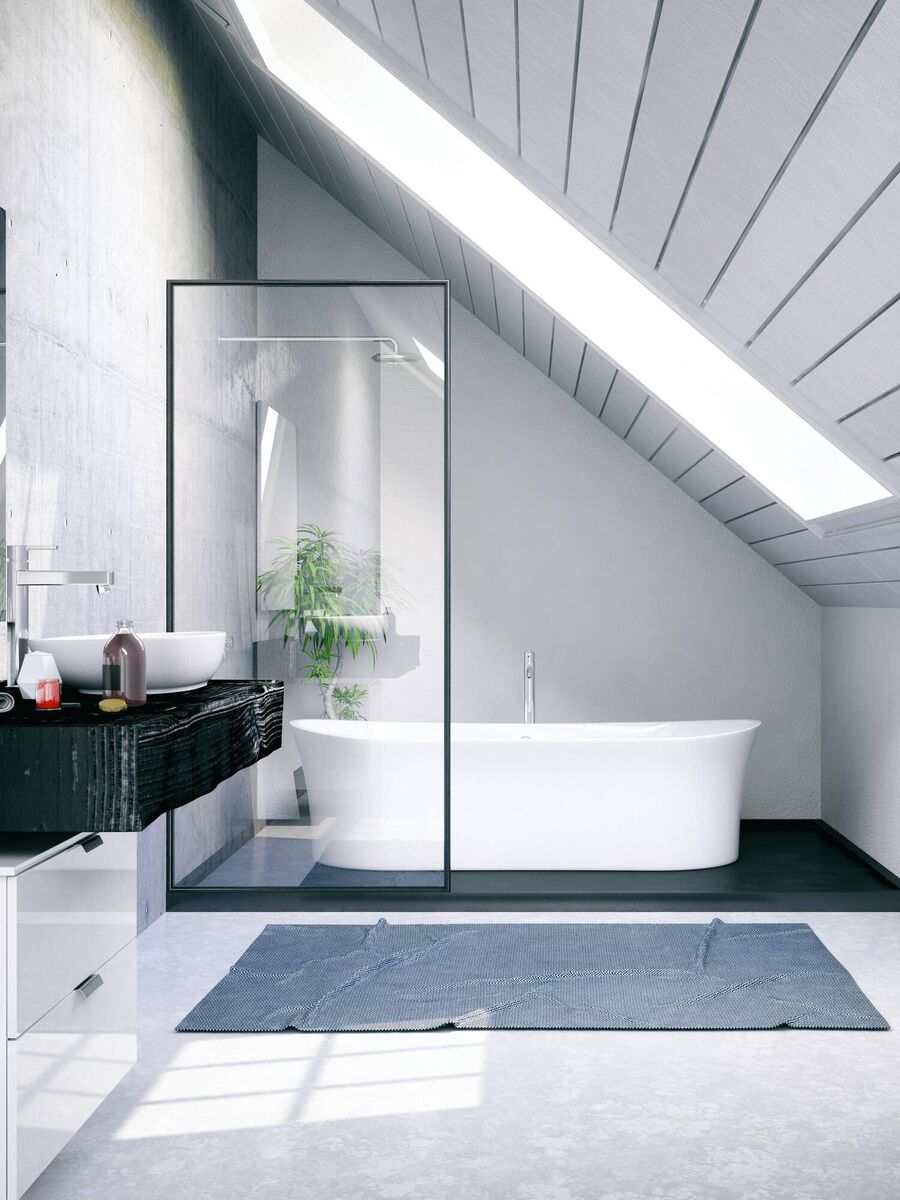Conversion tactics: making the most of unused space in your home

“Garage conversions make great teenage dens, home offices or playrooms, where you don’t need huge amounts of space,” says architect Denise O’Connor. Photograph: Getty Images
In part 10 of our Switch it Up series, we’re looking at ways to make more of the homes we already have by exploring the potential of conversion options.
A little extra space goes a long way in the average three bedroom semi-detached family home and with people working, exercising and participating in most forms of relaxation and entertainment at home, maximising our homes’ potential is on many of our minds.
Garages and attics can offer real scope for change and can also be used in a variety of ways. We spoke to architect Denise O’Connor from Optimise Design who takes us through conversions of both spaces.
If you’re lucky enough to have an adjoining garage, the chances are it is being used to store a host of bits and bobs such as lawnmowers, tools and bikes.
Instead, it could be used as a home office or for a playroom, both of which are higher up the agenda for many right now. While some garage conversions can be done without planning permission, in most cases it will be required.
If you want to add a new window to the front of the conversion or raise the roof height, you’ll need to seek planning approval.
“Garage conversions make great teenage dens, home offices or playrooms, where you don’t need huge amounts of space,” O’Connor says, pointing out that as garages are often long and narrow, it is best to be realistic about usage.
“Others knock out space to create a more generous hallway and cloakroom. You could also have a playroom or den at the front of the house and the middle space could then become a guest toilet or a bigger utility room that serves the kitchen. A long and narrow space is good for that,” she advises.
In terms of what’s required, expect to undertake the following. “Often in garages the floor level will be different to the rest of the house, so there would be a bit of work required to bring it up to the same level as the rest of the house.
That means you’ll need to take the roof off as your floor to ceiling level would be really low otherwise,” O’Connor says.
As well as that, power supplies are often located in garages and would need to be moved, while plumbing and electrics should be run into the garage, depending on use. Often garage conversions form part of a larger two-storey extension project, so those considering building on top really do need expert advice.

“It’s important that a structural engineer takes a look at the build-up of the walls and the foundations because often it is not possible to build on top of what is already there,” O’Connor says.
For those craving space for boisterous younger kids or older, bored teens, a playroom/den is an excellent choice, and careful planning will help you get the best space possible.
“They’re most successful when you incorporate built-in joinery so you can maximise your space. Clever units that incorporate a TV but also lots of storage for kids’ toys – or some built in seating that doubles up as storage are highly recommended.”
For those who want the second sitting room option, be mindful of configuration, O’Connor says.
“When you’re planning, the position of the door is really important to think about. I’ve seen some conversions where if the door had been moved a couple of feet towards the kitchen they’d have been able to fit a good sized sofa into the room. The wrong configuration can make things limited,” she stresses.
A garage conversion on an average three bed semi-detached property can cost from €2,000 per sq m with the total cost for a single storey conversion likely to be in and around €50,000, including all finishes.
“It very much depends on what is being put in there too. If you were considering a downstairs wet room, for example, that might change costs,” she notes.

Attics are something we don’t tend to think about except when we’re taking down the Christmas decorations or putting away the holiday suitcases. But there is plenty that can be done with this space overhead, and conversions fall into two categories: habitable and uninhabitable.
The easiest to achieve is an uninhabitable conversion which can be finished for around €20,000.
“You don’t need planning permission for an uninhabitable attic,” O’Connor advises. “Plenty of people use these spaces as hangouts, and they are valuable even if they can’t be classed as habitable. Insulating the attic is really worth doing as well as sound proofing as much as you can also.”
On the other end of the scale is the habitable conversion which is what many people go for if they are planning something like a full master suite, including walk in wardrobe and en suite.
“You can get a fabulous result with the attic and it opens up a whole new perspective for people in their home. This is untapped space right over your head, and is a superb way to make extra space for a home gym or office – it’s the ideal flexible space,” O’Connor says.

The key to habitable attic conversions is headroom. “If it’s not comfortable enough for someone to walk around in, without raising the roof, it’s not a good idea. In the attic, 50 per cent of the floor area needs to be 2.4 metres high for it to be classed as habitable,” she advises.
“The majority of houses won’t be able to achieve that without constructing a dormer – continuing out a flat roof section to give you that headroom. That needs planning permission and you should get professional advice if you plan to go down this route.”
In terms of additions that add value, O’Connor says, “I would advise trying to get an en suite in, and make sure you include some kind of easy access to under eaves storage too, this is invaluable.” Depending on the size of the attic, a habitable conversion on a three-bed semi will start at around €35,000.
For both attic conversion types, entry is another important factor.
“Getting stairs up there can mean eating into one of the other rooms, often the box room, in order to get that run up. It’s important you take into account the space you will lose,” O’Connor says, adding “It’s much better if you can follow your existing stairs so it feels like a continuation.”
Switch it Up is a new 12-part series for those who might be considering switching mortgage provider to make savings on their monthly repayments. It is a follow-up to the award-winning Story of Home series, which explored the idea of home through the eyes of creative people who found their dream place to live.
Now, Switch it Up, which like Story of Home is supported by Ulster Bank, looks at helpful information on home improvements as well as renovators’ home tours. Plus, we’ve got helpful answers to your mortgage switching queries: from the incentives to how long it will take (not long!) and what’s involved in making a mortgage switch, read our Everything you need to know about switching your mortgage guide at switchitup.
Perhaps now more than ever, we want our homes to suit the way we live and work, and being able to explore the potential in our homes offers us flexibility. This series is designed to unlock the ways in which we might Switch it Up in our homes as our wants and needs change.
Switching your mortgage could free up funds to help you make these changes. “At Ulster Bank, we want to be a part of the journey you take in making your home the best it can be,” says Sean Kellaghan, mobile mortgage manager at Ulster Bank.
“We want to make the mortgage switching process as simple and as hassle-free as you do,” he adds. Kellaghan understands the stress that can come with making a switch, and he offers reassurance.
“We are here to help you, and the process is a lot shorter and a lot more straightforward than you might think. Get in touch today and we can talk you through the options and process.”
For more information, visit ulsterbank.ie
is regulated by the Central Bank of Ireland







